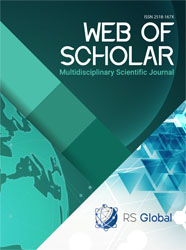CHALLENGES OF DIFFERENTIAL DIAGNOSIS OF CONGENITAL UTERINE MALFORMATIONS
Abstract
A unicornuate uterus varies from 2.4 to 13% among Müllerian anomalies and most of them have rudimentary (functional) cavity. Patients with rudimentary horns that contain functional endometrium are at the risk of gynecological and obstetric complications such as ectopic pregnancy, hematometra, endometriosis and poor pregnancy outcomes. These reports describe two cases. One of them regards of a successful pregnancy in non- communicating rudimentary horn of unicornuate uterus and postpartum clinical manifestation of it and another one describes adenomyosis in rudimentary horn. In both cases were difficulties of differential diagnosis of uterus anomalies.
References
Sánchez-Ferrer ML, Prieto-Sanchez MT, Sánchez Del Campo F. Variations in clinical presentation of unicornuate uterus with non-communicating rudimentary horn (class IIB of the American Fertility Society classification). Taiwan J Obstet Gynecol. 2018;57(1):110-114.
Blancafort C, Graupera B, Pascual MÀ, Hereter L, Browne JL, Cusidó MT. Diagnosis and laparoscopic management of a rudimentary horn pregnancy: Role of three-dimensional ultrasound. J Clin Ultrasound. 2017;45(2):112-115.
Tekani H., Karthik G. Unicornuate uterus with a functional non-cjmmunicating horn in a Parous Woman. J Obstet Gynaecol India. 2016 Dec; 66(Suppl 2): 604-606.
Pados G, Tsolakidis D, Athanatos D, Almaloglou K, Nikolaidis N, Tarlatzis B. Reproductive and obstetric outcome after laparoscopic excision of functional, non-communicating broadly attached rudimentary horn: a case series. Eur J Obstet Gynecol Reprod Biol. 2014 Nov;182:33-7.
Caserta D, Mallozzi M, Meldolesi C, Bianchi P, Moscarini M. Pregnancy in a unicornuate uterus: a case report. J Med Case Rep. 2014;8:130.
Li X, Ouyang Y, Yi Y, Lin G, Lu G, Gong F. Pregnancy outcomes of women with a congenital unicornuate uterus after IVF-embryo transfer. Reprod Biomed Online. 2017; 35(5):583-591.
Grimbizis GF, Gordts S, Di Spiezio Sardo A, et al. The ESHRE/ESGE consensus on the classification of female genital tract congenital anomalies. Hum Reprod. 2013;28(8):2032–2044.
Khati NJ, Frazier AA, Brindle KA. The unicornuate uterus and its variants: clinical presentation, imaging findings, and associated complications. J Ultrasound Med. 2012 Feb;31(2):319-31.
Li X, Peng P, Liu X, Chen W, Liu J, Yang J, Bian X. The pregnancy outcomes of patients with rudimentary uterine horn: A 30-year experience. PLoS One. 2019;14(1): e0210788.
Dhar H. Ruptured rudimentary horn at 22 weeks. Niger Med J. 2012 Jul-Sep; 53(3): 175–177.
Views:
300
Downloads:
162
Copyright (c) 2019 The author

This work is licensed under a Creative Commons Attribution 4.0 International License.
All articles are published in open-access and licensed under a Creative Commons Attribution 4.0 International License (CC BY 4.0). Hence, authors retain copyright to the content of the articles.
CC BY 4.0 License allows content to be copied, adapted, displayed, distributed, re-published or otherwise re-used for any purpose including for adaptation and commercial use provided the content is attributed.











